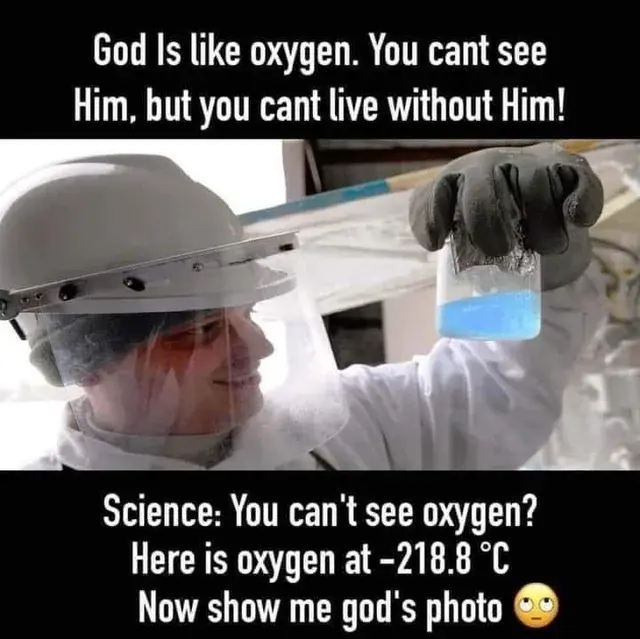this post was submitted on 01 Dec 2023
876 points (94.9% liked)
Atheist Memes
5574 readers
243 users here now
About
A community for the most based memes from atheists, agnostics, antitheists, and skeptics.
Rules
-
No Pro-Religious or Anti-Atheist Content.
-
No Unrelated Content. All posts must be memes related to the topic of atheism and/or religion.
-
No bigotry.
-
Attack ideas not people.
-
Spammers and trolls will be instantly banned no exceptions.
-
No False Reporting
-
NSFW posts must be marked as such.
Resources
International Suicide Hotlines
Non Religious Organizations
Freedom From Religion Foundation
Ex-theist Communities
Other Similar Communities
!religiouscringe@midwest.social
founded 1 year ago
MODERATORS
you are viewing a single comment's thread
view the rest of the comments
view the rest of the comments

Correct. The only substance I can imagine being completely transparent would be some kind of dark matter. Everything else still interacts with light, no matter how little. Even deep space isn't completely transparent, as we can tell what elements exists as interstellar and intergalactic dust from spectrographs.
Atmospheric absorption spectrum - We can see (heh) that the atmosphere is completely opaque to most electromagnetic radiation before scattering. Only some microwaves and short radio waves can pass without any absorption.
Atmospheric transmission spectrum - We can see that not even 60% of visible light is transmitted to the surface directly due primarily to scattering losses. That scattered light is why our sky is blue during the day and orange at sunset/sunrise. Mars' atmosphere is orange during the day and blue at sunset/sunrise for the same reason.
The physics of light scattering doesn't change based on how much atmosphere you have, even a single particle can scatter light. In fact, the physics of scattering is based on single particles, and the particle size is what differentiates Rayleigh scattering from Mie scattering. Other interactions with the incident particle can cause Raman and Compton scattering too. None of these need multiple particles.
The density of the atmosphere matters.
Because scattering happens when photons hit particles, so the more particles the more scattering.
Light coming at you thru the atmosphere from above has a much shorter trip through the atmosphere than light coming at you near the horizon.
The longer path length means more chances to hit particles and scatter and the higher frequency 'blue-er' light gets filtered out more or absorbed and reradiated as a lower frequency light, more so than the lower freq red/yellow light.
Photons should be fully transparent right?
Yes, more stuff means more scattering, but scattering happens at all scales.
Photons don't cause absorption or scattering with themselves, no, but they do interfere. The interference really only shows up when the waves are nearly in-phase, so random light rarely interferes, but it should happen.
Photons aren't matter anyway, so I can't make a substance out of them. The rest of the bosons should interact with light even less, although the gravity of their energy might bend it the tiniest amount.